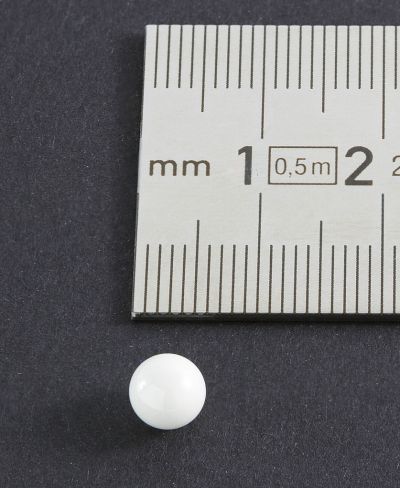Protein building blocks for nanotechnology

Zirconium dioxide ZrO2 bearing ball 6mm
By Lucasbosch (Own work) [CC BY-SA 3.0 (http://creativecommons.org/licenses/by-sa/3.0)], via Wikimedia Commons
Proteins are ubiquitous, serving a myriad of important functions in living organisms from neurotransmission to cell recognition. Scientists have now engineered stable and functional protein modules for integration into novel nanodevices.
Proteins are a type of natural polymer, formed from chains made of amino acids. The amazing diversity in the function of proteins is largely related to the 3D structure the protein adopt after synthesis, in turn governed largely by the peptide sequences.
The ability to engineer proteins for desired structures and functions while ensuring stability paves the way to unprecedented nanobiological tools. Biorecognition platforms are foreseen in applications such as detecting disease or environmental hazards. EU-funded scientists laid the groundwork for novel protein-based nanotechnology through work on the project 'Protein design to generate bio-functional nanostructures' (BIONANOTOOLS).
Team members focused on repeat proteins called tetratricopeptide repeats (TPRs). TPRs are structural motifs present in a wide range of proteins in a wide range of organisms from bacteria to humans. The motif consists of 3 to 16 tandem repeats of certain amino acid residues and it mediates protein–protein interactions.
Thermodynamic stability is a requisite for use in nanobiological platforms and is largely related to the 3D structure that affects interactions among individual components. Studies demonstrated that TPR stability can be improved in a predictable way by using simple design principles.
Scientists then went on to demonstrate the ability to design TPRs for function in addition to stability. Their repeat protein modules were able to bind novel target peptides both in vitro and in cells.
BIONANOTOOLS researchers went on to immobilise the stable and functional recognition modules onto surfaces to create biorecognition platforms. They also demonstrated the ability to control intrinsic self-assembly properties of the TPRs to form nano-structured thin films made entirely of proteins and nanometric fibres.
Enhanced understanding of TPRs has led to engineering design for increased stability and structure for specific functions. Integrating technology within substrates on thin films and nanofibres paves the way to a new era of nanodevices for applications from nanotechnology to biomedicine and beyond.
published: 2015-05-14

